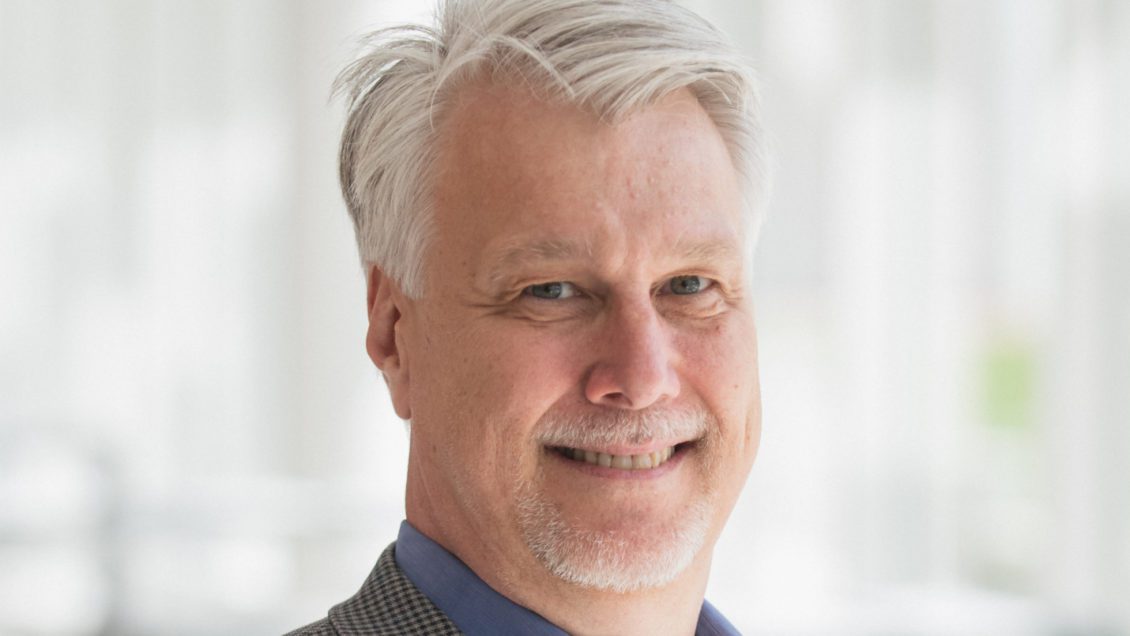A nationwide partnership of scientists and engineers, including Mark Johnson of Clemson University, is working on new methods of cleaning and sanitizing medical masks to help protect healthcare providers from COVID-19.
Highly pressurized carbon dioxide could be used as part of a process that not only sanitizes N95 masks by inactivating the novel coronavirus but also cleans the dirt and stains that result from normal use, said Johnson, the Thomas F. Hash Endowed Chair in Sustainable Development and director of Clemson University’s Center for Advanced Manufacturing.

N95 masks are considered crucial protective medical equipment because they prevent healthcare providers from inhaling the virus. Masks are supposed to be discarded after one use and have been in short supply since the pandemic began.
“We want to make sure our healthcare providers are healthy because every one of them is taking care of other people,” Johnson said. “The availability of masks has become a critical point – forcing the need to either get new masks from extended supply chains or by finding new ways to safely clean and reuse the masks.”
Johnson, a professor of materials science and engineering, said that when he first heard about mask shortages he connected with the University of South Carolina’s Michael Matthews, who has conducted research in carbon dioxide technology, including medical sterilization and disinfection. He now serves as senior associate dean for research and graduate education in the University of South Carolina’s College of Engineering and Computing and as a professor of chemical engineering and biomedical engineering.
Johnson said he and Matthews realized they could tap colleagues from across the country to address the mask problem. They called researchers at other universities, national labs, small-businesses and medical research facilities. In doing so, Johnson and Matthews pulled together a partnership of over 10 groups.
They also connected with researchers working on different ways to decontaminate masks. The researchers were affiliated with various higher-education institutions, including the Massachusetts Institute of Technology, Stanford University, Harvard Medical School, and universities in Nebraska and Iowa. Those researchers are working with various technologies, including ultraviolet light, hydrogen peroxide vapor and moist heat.
Johnson said that as the partnerships grew, he and Matthews realized it was important to share what they were learning so other researchers would not duplicate the work. Johnson said he and Matthews are planning a remote workshop to share the results of different methods with healthcare providers in South Carolina and across the country.
“It has been rewarding to see the research community step up across the country, and we can both share our experiences and learn what other places are doing,” Johnson said.
The work Johnson and Matthews are doing in South Carolina sharpens the focus on a process called dense-phase CO2. The team is now exploring two dense-phase CO2 options to clean and sanitize the masks. One involves liquid CO2, and one involves the higher-pressure supercritical CO2.
“Supercritical CO2 is formed under very high pressure– 1,500 to 4,000 pounds per square inch,” Johnson said. “Atmospheric pressure is about 15 pounds per square inch.”
Johnson and Matthews are working with two companies to apply dense-phase CO2 technology to N95 mask cleaning, Cool Clean of Eagan, Minnesota and TharProcess of Pittsburgh.
“The South Carolina-based team is leading this national effort on carbon dioxide cleaning,” Johnson said. “Clemson and USC are quarterbacking the effort together. Mike and I are in close coordination everyday. I’m working with most of the supercritical, and he’s working with most of the liquid CO2. We’re testing these processes to see which will be most effective.”
The team is working towards an emergency authorization from the Food and Drug Administration for the mask cleaning technique, Johnson said, and with the National Institute for Occupational Safety and Health to certify whether the cleaned masks filter the particles as expected.
The team is also tapping the expertise of local colleagues. Among them are Melinda Harman, an associate professor of bioengineering at Clemson, and Eric Vejerano, an assistant professor in the University of South Carolina’s Arnold School of Public Health
Harman said that while Johnson and Matthews are focused primarily on sanitizing the masks so they are virus free, she is studying how to clean them of mucous and other materials.
“We are looking at how we can introduce detergents into their process, which is quite challenging,” Harman said. “The carbon dioxide process is an industrial process, and we need to find detergents that are compatible. They’ve got a great team with the industry folks who know their technology. It’s just a matter of getting the pieces in their hands and seeing how they’re going to work.”
Matthew said he is optimistic the dense-phase CO2 technology could be deployed in the field to clean N95 masks.
“This situation may make the country want to take another look, with some urgency, at selectively reusing certain sorts of medical supplies in an emergency situation, or maybe even in a regular situation,” he said. “This is an opportunity.”
Get in touch and we will connect you with the author or another expert.
Or email us at news@clemson.edu

